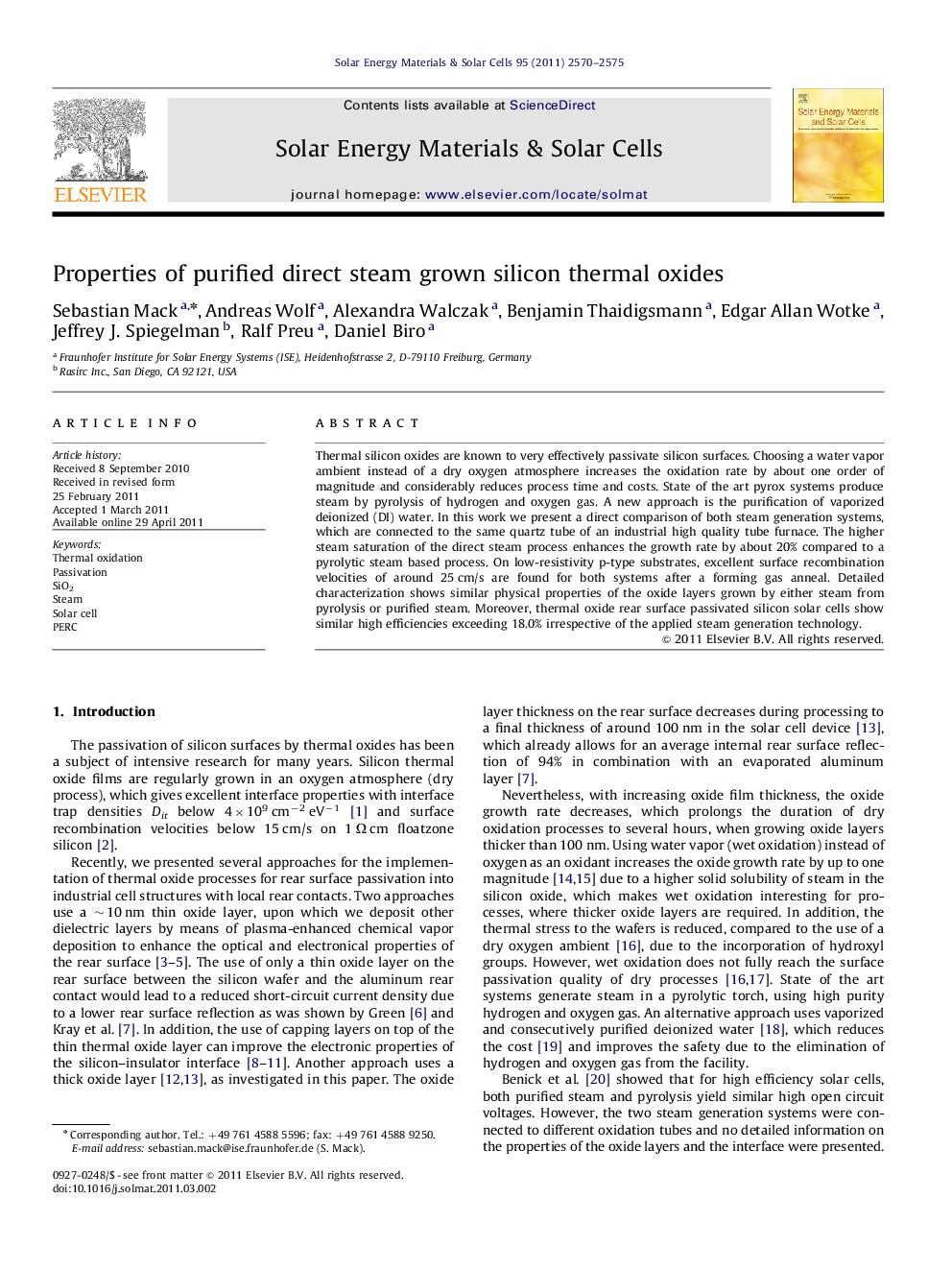| Article ID | Journal | Published Year | Pages | File Type |
|---|---|---|---|---|
| 78715 | Solar Energy Materials and Solar Cells | 2011 | 6 Pages |
Thermal silicon oxides are known to very effectively passivate silicon surfaces. Choosing a water vapor ambient instead of a dry oxygen atmosphere increases the oxidation rate by about one order of magnitude and considerably reduces process time and costs. State of the art pyrox systems produce steam by pyrolysis of hydrogen and oxygen gas. A new approach is the purification of vaporized deionized (DI) water. In this work we present a direct comparison of both steam generation systems, which are connected to the same quartz tube of an industrial high quality tube furnace. The higher steam saturation of the direct steam process enhances the growth rate by about 20% compared to a pyrolytic steam based process. On low-resistivity p-type substrates, excellent surface recombination velocities of around 25 cm/s are found for both systems after a forming gas anneal. Detailed characterization shows similar physical properties of the oxide layers grown by either steam from pyrolysis or purified steam. Moreover, thermal oxide rear surface passivated silicon solar cells show similar high efficiencies exceeding 18.0% irrespective of the applied steam generation technology.
Graphical abstractFigure optionsDownload full-size imageDownload as PowerPoint slideHighlights► We compare pyrolytic steam generation and direct steam purification. ► Both systems are connected to the same oxidation tube. ► We find the same level of silicon surface passivation quality. ► Similar optical properties of thermal oxide films. ► Same conversion efficiency on rear surface passivated solar cells with local contacts.
